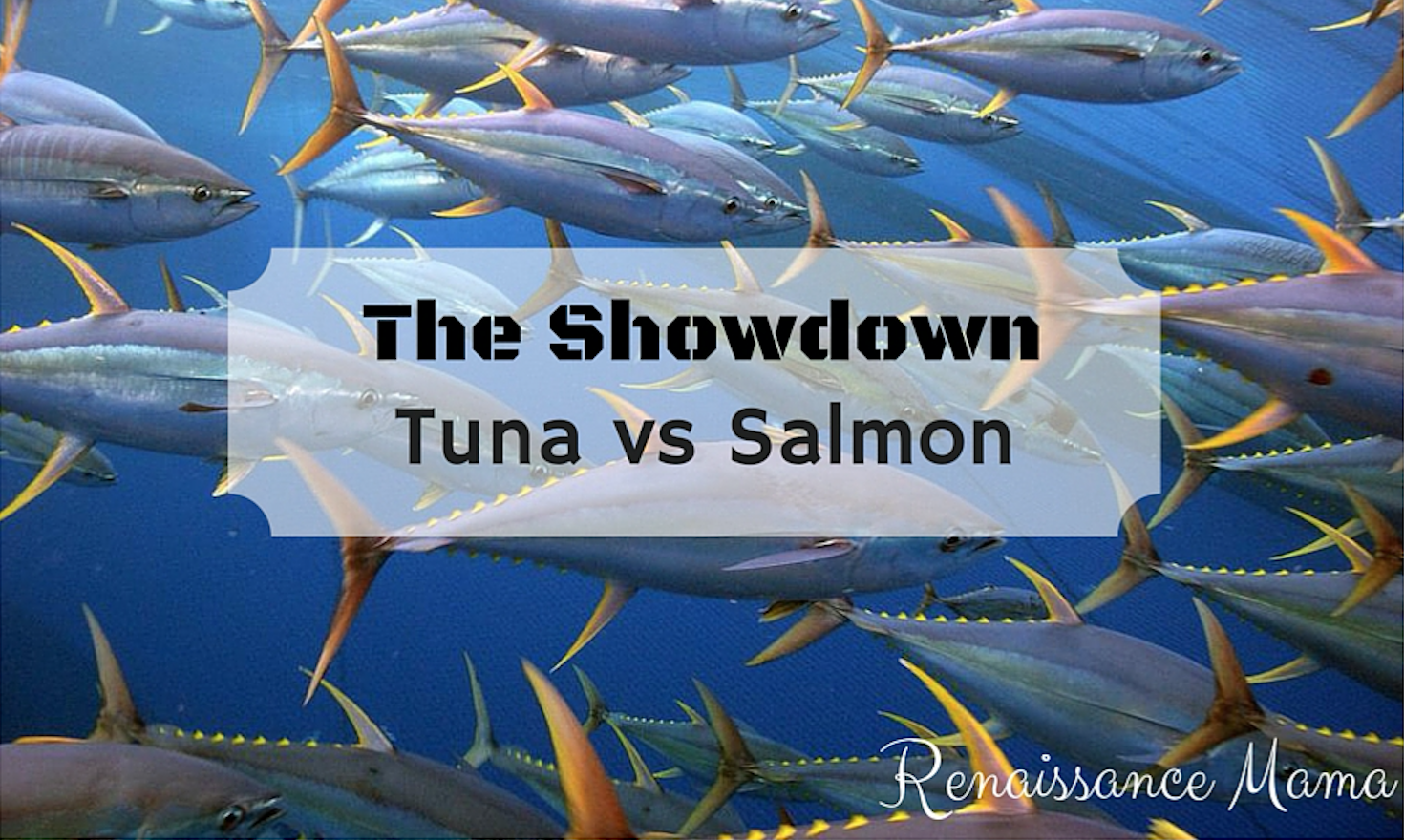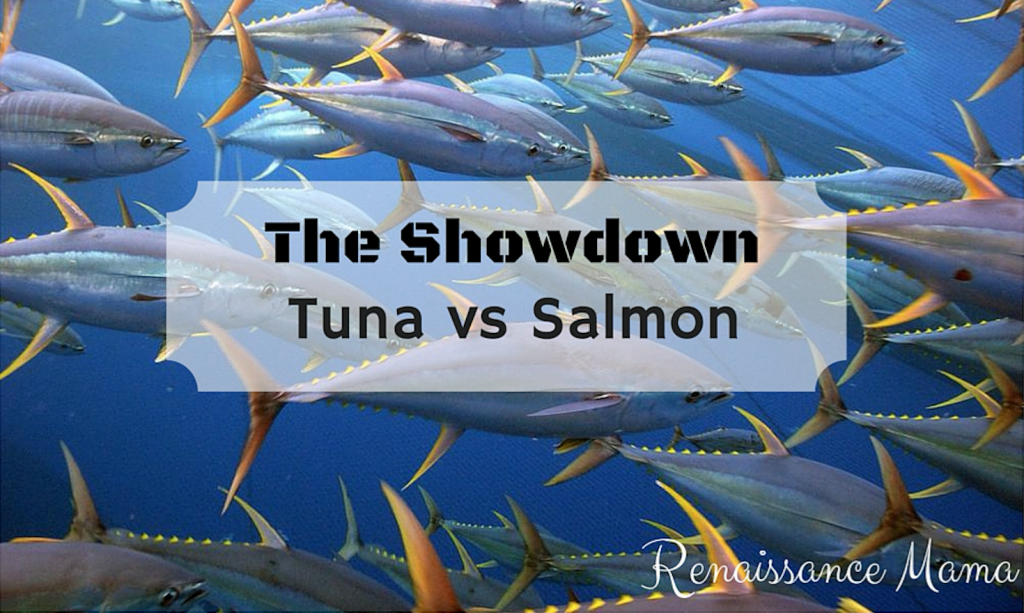
The Showdown: Tuna vs Salmon and Why You Should Care

Tuna has been a favorite lunch in our household. One can will feed our entire family, so it’s cost effective, and they like the taste! We started researching and learning more about tuna…and so we’ve made some changes to make sure we’re eating the healthiest option!
I’ll share what we’ve learned, and give you a ranking of our preferences of canned fish, from best to worst.
We are taking three things into consideration: the potential amount of heavy metals in the fish, the type of preservatives used in the processing, and the amount of omega-3’s in each fish.
Let’s start with the potential amount of heavy metals. Bigger fish, simply because of their size, are prone to have higher levels of mercury and other heavy metals in them. They’ve lived longer, and can have more of it in their systems. The average albacore tuna weighs 73 lbs. Comparatively, the average pink salmon weighs 8.2 lbs and the the average red sockeye salmon weighs 9.3 lbs. That’s a HUGE difference!! We are opting to eat salmon instead of tuna because of their smaller weight.
A very common brand of tuna, with the claim “in water” on the label, actually contains vegetable broth and pyrophosphate as well as the tuna, water, and salt. Guess what else is in the vegetable broth? Soy. Boo. Trader Joe’s tuna comes in for the tuna win, since it only contains tuna, water, and salt. Great job, Trader Joe’s.
On to omega-3’s. This fatty acid is food for your brain and is a highly recommended dietary supplement. You can get loads of it in tuna and salmon! The salmon contain quite a bit more omega-3’s than tuna, giving another point to the salmon. The tuna, on the can I bought from Kroger, contains 125 mg/serving while the pink salmon has 390 mg/serving. The red sockeye salmon comes out on top with a whopping 590 mg/serving.
Summary: We are opting for sockeye salmon to limit our intake of heavy metals, avoid yucky preservatives, and get more omega-3’s!
- Sockeye Salmon
- Pink Salmon
- Albacore tuna in water from Trader Joe’s
- Albacore tuna in water from Kroger
Selecting Your Salmon
At our local Kroger, we found a couple of different salmon options. The pink salmon was less expensive, but unfortunately, the company felt the need to use a preservative called sodium tri-polyphosphate. Essentially, that preservative makes the fish hold more water. Then they can put less fish in the can. Boo. Sodium tri-polyphosphate is considered a fungicide, insecticide, and a rodenticide by the EPA. Of course I want to eat that! Read your can carefully and make sure it says salmon, salt, water. Or simply salmon, water. Nothing else is needed!! The red salmon only contains salmon, salt, and water so it’s the winner for simplicity.
Be sure to look for wild-caught salmon. Fish from a farm contain far fewer omega-3’s than their wild cousins, and have a lot more contamination!!
Pin It